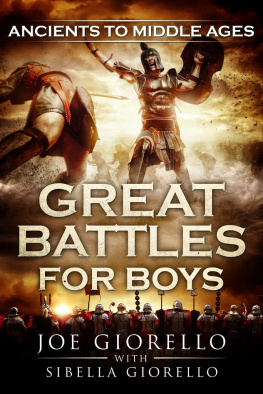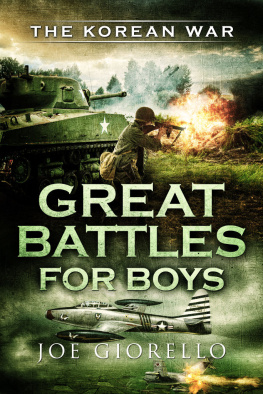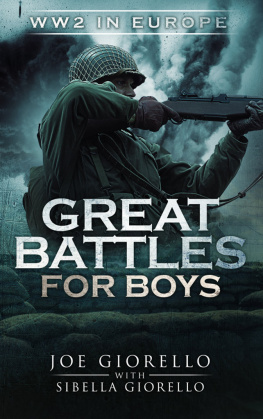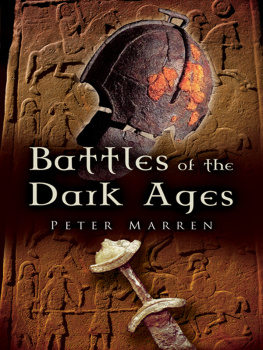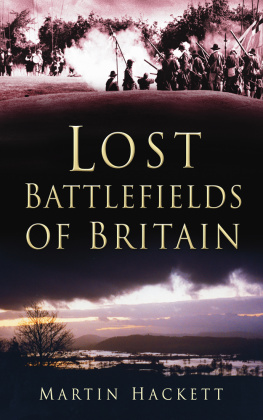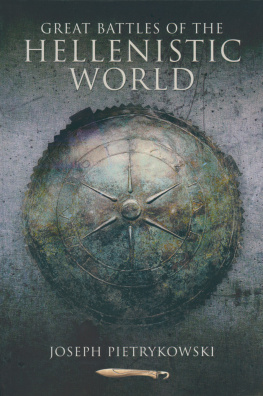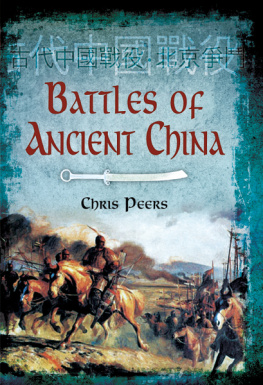Bloomsbury Academic
An imprint of Bloomsbury Publishing Plc
|
|---|
50 Bedford Square | 1385 Broadway |
London | New York |
WC1B 3DP | NY 10018 |
UK | USA |
www.bloomsbury.com
BLOOMSBURY and the Diana logo are trademarks of Bloomsbury Publishing Plc
First published in 2007 by the Continuum International Publishing Group Ltd
Paperback edition published in 2009
Reprinted 2011
Reprinted by Bloomsbury Academic 2013
Philip Sabin, 2009
Philip Sabin has asserted his right under the Copyright, Designs and Patents Act, 1988, to be identified as Author of this work.
All rights reserved. No part of this publication may be reproduced or transmitted in any form or by any means, electronic or mechanical, including photocopying, recording, or any information storage or retrieval system, without prior permission in writing from the publishers.
No responsibility for loss caused to any individual or organization acting on or refraining from action as a result of the material in this publication can be accepted by Bloomsbury or the author.
British Library Cataloguing-in-Publication Data
A catalogue record for this book is available from the British Library.
ISBN: HB: 978-1-8472-5187-9
PB: 978-0-8264-3015-1
ePDF: 978-0-8264-7517-6
ePub: 978-0-8264-2200-2
Library of Congress Cataloging-in-Publication Data
A catalog record for this book is available from the Library of Congress.
Contents
(All the artwork was created by the author.)
Between pages 58 and 59
Between pages 138 and 139
Between pages 218 and 219
My first thanks must go to Tony Morris and Martin Sheppard of Hambledon for commissioning an ancient warfare book in the first place, and then for showing even more patience and tolerance than publishers normally display in the face of missed deadlines and the gradual evolution of the topic into something very different from what was envisaged in our initial discussions. I am also very grateful to Ben Hayes and his colleagues at Continuum for being so helpful and for getting the book into print so quickly when the boot was at long last on the other foot.
The dedication identifies two people whose inspirational writing has in different ways shaped the unique approach that this book adopts, but it would be invidious not to mention some others whose ideas and enthusiasm have been equally infectious over the years. I would particularly like to highlight Bernard Leather, Phil Barker, Richard Berg, Duncan Head, Peter Connolly, Nicholas Hammond, Ted Lendon, Barry Strauss and Adrian Goldsworthy in this regard. I am also indebted to Tim Cornell, Boris Rankov and Hans van Wees for their advice and encouragement during our various joint courses and projects over the years.
The book could never have come about without years of support from my many colleagues and friends within the Society of Ancients, who have helped me to publish and test each new variant of the model as it has gradually evolved since 1993. I would especially like to mention Phil Steele, Richard Jeffrey-Cook and John Graham-Leigh for their ideas and enthusiasm, and Eric Cruttenden and Alan Waller for becoming such wonderful partners in testing and presenting the system. There are dozens of others around the world whose suggestions and feedback have been invaluable, and I am very grateful to you all. Special mention must go to Dale Larson, whose simple but ingenious Cyberboard system has made it so much easier to produce and use the necessary diagrams and graphics.
Finally, and above all, I must thank my family for their unfailing support during the long gestation of this project. It has taken countless hours of study and design effort, and I simply could not have managed it without their constant love and encouragement.
To Charles Grant and John Lazenby who inspired it all
1
Introduction
Ancient battles seize the modern imagination. Far from being forgotten, they have become a significant aspect of popular culture, prompting a continuing stream of books, feature films, television programmes and board and computer games. In our modern age, when war has become a dismal globalized continuum of suicide bombings, ethnic massacres, long-range bombardment, counter-insurgency operations and pervasive security restrictions, there is a certain escapist satisfaction in looking back to an era when conflicts between entire states turned on clear-cut pitched battles between formed armies, lasting just a few hours and spanning just a few miles of ground.
Unfortunately, there are severe limits to our understanding of these long distant engagements. Not only have transformations in the face of war left us with no personal experience of the dynamics of massed close quarter fighting, but the ancient evidence that has survived is lamentably thin typically, just a few pages of often ambiguous or unreliable text on any individual battle. Hence, whereas the mass of secondary writing on more recent conflicts like the Second World War is based on an even larger mass of primary material such as archives and personal accounts, the situation for ancient military historians is exactly the reverse an inverted pyramid in which modern scholarship teeters unsteadily above a narrow and unsatisfactory evidentiary base. Erich von Manstein famously wrote of the lost victories in Hitlers campaign against the USSR, but the battles of antiquity are lost to us all in a much more pervasive sense of the word.
One response to this problem would be to admit defeat, to acknowledge that scholars over the past two centuries have already wrung every ounce of useful information out of the surviving evidence, and to shift our enquiries to
So, is it possible to say anything really new about ancient battle, rather than taking the easier option of simply summarizing established wisdom in a more up-to-date package with fancier graphics? To my mind, the answer must lie in a process of synthesis. All the recent works to which I have referred advance our understanding of ancient military history because they adopt such a thematic approach, drawing together scraps of evidence from diverse sources to create an overall analysis that is greater than the sum of its individual parts. The two-volume Cambridge History of Greek and Roman Warfare, which I recently co-edited, embraced exactly the same stance, eschewing chronological narration in favour of providing thematic overviews of different aspects of warfare across four generic periods. In the present volume, I will push this process of synthesis even further by building up a generic model of ancient battle in a more analytically rigorous way than in previous surveys of the topic. I will then use this model to cast new light on each individual battle in turn, thereby taking the whole process full circle and returning to the narrative details that are usually sacrificed within a purely thematic approach.
An example should help to illustrate what I mean. Alexanders defeat of Poruss Indians at the River Hydaspes in 326 BC is very difficult to reconstruct with any certainty because of pervasive ambiguity and contradiction within our surviving sources. Arrian (Anab. V.1516) says that Porus had 200 elephants, which he posted 100 ft apart in front of his line, while Curtius (VIII.13.6) claims he had only 85 elephants, and Polyaenus (IV.3.22) says they were only 50 ft apart figures that in combination could mean a line as short as 1.3 km or as long as 6 km. Arrian seems to imply that Alexander fought the battle with only the



